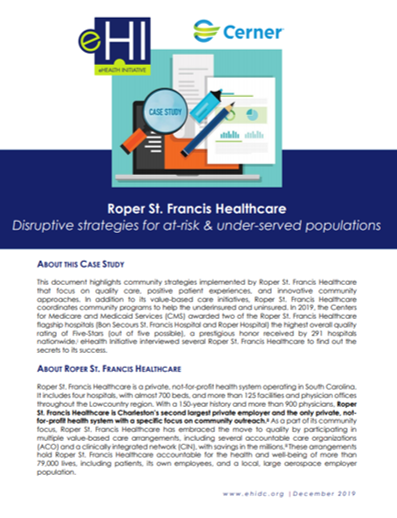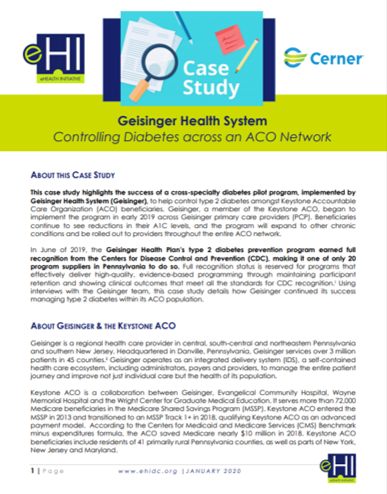Connecting the Health Care Data Dots to Improve Consumer Care
What was the first “connect the dots” picture you’ve ever drawn? Can you remember the amazement at seeing seemingly random points spread across a sheet of paper coming together to form a complete big picture? Connect the dots pictures are an important experience for young children. And understanding that putting together small pieces of data to gain a better view of the ‘big picture’ is an important life lesson.
it is not just children that benefit from ‘connecting the dots’. Managers in the health and human service field are surrounded by data and data points. But, the connection between these data points to form the ‘big picture’ that is needed for the best outcomes is often not revealed.
For consumers with a behavioral health condition, the ‘big picture’ is often quite complex. Most of these individuals have a range of different clinical needs, developmental challenges, and environmental constraints. it is up to the clinical professional to recognize the resulting complexity (a.k.a. “connect the dots”) across a fragmented health care continuum.
WEBINAR: Coronavirus: Can Artificial Intelligence Make A Difference?
The US health system is at the brink of operating at above capacity and healthcare organizations need clarity on how to address COVID-19 risk within their population and their community more broadly. AI has the ability to deliver intelligence that can assist national response to COVID-19 by : giving insights into which hospitals will have similar experiences and impacts; identifying expected relative risk across geographies; surface high-risk patient populations; and provide clinicians with point-of-care clinical decision support.
Lyft Signs Long-Term Nationwide Heathcare Logistics Deal
Lyft Signs Long-Term Nationwide Heathcare Logistics Deal
The ride-sharing company Lyft, establishing a long-term commitment to healthcare transportation, signed a multi-year deal with Logisticare Solutions, which coordinates non-emergency medical transportation across the country.
LogistiCare is known for its business helping state governments and commercial health insurance companies manage their non-emergency medical transportation, coordinating everything from the healthcare providers and drivers to social service agencies. Lyft first signed a three-year deal with LogistCare in 2017 and executives said that arrangement has been a success, facilitating “access to millions of rides” across 48 states and the District of Columbia.
It’s the latest in a parade of new business announced this year by Lyft and rival Uber to tap the growing business of transporting patients to and from health facilities. The ride-share companies are signing up hospitals, health insurers and other arrangements linking their businesses more seamlessly to the U.S. healthcare system.
The full Forbes article can be viewed at this link.
A Nod To The Past Can Help Define Healthcare's Future
A Nod To The Past Can Help Define Healthcare's Future
In 1970, healthcare spending represented 6.9% of U.S. GDP. Last year, findings from Centers for Medicare & Medicaid Services showed healthcare spending in the U.S. was expected to reach $3.8 trillion, representing 17.8% of GDP. It’s a sobering figure, and one that is only expected to rise during the coming years. Managing this spending is central not only for the health of the industry, but also for the U.S. economy.
For decades, the healthcare industry operated on a fee-for-service model. Costs soared in large part due to inefficiencies in the supply chain and care delivery related to this volume-based model. As a result, the U.S. is known for spending much more on healthcare than other countries, while delivering lower quality outcomes than many other developed countries.
Moving to a value-based care model could fundamentally shift how the healthcare industry conducts business. The industry would no longer support reimbursement based on volume, but instead, on value. Value in healthcare has been defined as "the outcomes that matter to patients and the costs to achieve those outcomes."
The full Forbes article can be viewed at this link.
Why you’re more likely to see a physician assistant than a doctor
Why you’re more likely to see a physician assistant than a doctor
Dr. Aziz Nazha, the oncologist in charge of the Cleveland Clinic’s Center for Clinical Artificial Intelligence, has a controversial opinion about what kind of training the next generation of doctors should undergo. “Physicians of the future should know how to program,” he said, “but I know I won’t win that battle.”
The fact that there are even discussions about whether coding should be a requirement of medical school is just one of the many changes at hand for the millions of clinicians who make up the U.S. health care workforce.
Not only are there predicted shortages of nurses and physicians that are expected to worsen over the next decade, industry attempts to shift from a fee-for-service reimbursement model to a value-based system have called for more efficient clinicians and better care for patients.
At the same time, hospitals are increasingly turning to artificial intelligence tools like chatbots and digital scribes and machine-learning models that aim to predict readmission rates and examine mammograms for breast cancer. (Even the tech giants are starting to dabble in health care. Apple Inc. is trying to improve nursing workflow, while Alphabet Inc.’s Google is testing whether digital voice assistants can reduce the amount of time doctors spend entering patient information into the electronic health record.)
All of these trends are influencing how care is delivered and by what kind of clinician. In the exam room of the future — which may be your living room — the doctor may ask about your feelings or know how to code, a physician assistant may be virtual or human, and a nurse may be assisted by a robot.
The full MarketWatch article can be viewed at this link.
Telehealth Beyond The Hospital
Telehealth Beyond The Hospital
The industry of telehealth is expanding for many reasons, including increased access to technology, a demand for more affordable health services and the desire for convenient care. Research findings projected a compound annual growth rate between 2014 and 2020 of 18.4% for telehealth services.
Telehealth can reduce initial hospital admissions, readmissions, length of stay and mortality rates. By expanding telehealth services to the outpatient industry, emergency department visits are reduced, patient engagement and health management are encouraged, and the overall cost of chronic disease management is lowered.
The full Forbes article can be viewed at this link.
Reports: Future and Current Implementations of Data & Insights Platforms
|
|
|
|
Reports:
Beyond the EHR Executive Perspectives on Data & Insights Platforms –
This report surveyed leading executives in the healthcare industry critical importance of having a data and insights platform to manage their patient and consumer populations. Data and insights platforms are helping healthcare stakeholders manage large volumes of data amongst and between systems, while connecting members of a care team, including the actual patient. Data will continue to be the most valuable asset in managing current and future business models. Read the Full Report Here.
Roper St. Francis Case Study –
This case study highlights community strategies implemented by Roper St. Francis Healthcare that focus on quality care, positive patient experiences, and innovative community approaches. In addition to its value-based care initiatives, Roper St. Francis Healthcare coordinates community programs to help the underinsured and uninsured. eHealth Initiative interviewed several Roper St. Francis Healthcare to find out the secrets to its success. Read the Full Report Here.
Geisinger Health System Case Study: Controlling Diabetes across an ACO Network –
This case study highlights the success of a cross-specialty diabetes pilot program, implemented by Geisinger Health System (Geisinger), to help control type 2 diabetes amongst Keystone Accountable Care Organization (ACO) beneficiaries. Beneficiaries continue to see reductions in their A1C levels, and the program will expand to other chronic conditions and be rolled out to providers throughout the entire ACO network. Read the Full Report Here.
Digital Therapeutics Leaders Focus On Reimbursement
Digital Therapeutics Leaders Focus On Reimbursement
This past week the DTx (Digital Therapeutics) West conference was held in Silicon Valley. CEOs, venture capitalists, and executives met to debate the state of digital healthcare. Surrounded by technology giants such as Oracle and Google, DTx leaders discussed how the industry needs to solve its reimbursement conundrum in order to keep growing.
The full Forbes article can be viewed at this link.
Value-Based Agreements in Healthcare: Willingness versus Ability
Value-Based Agreements in Healthcare: Willingness versus Ability
Although pharmaceuticals represent 10% of the overall US healthcare expenditure, the US drug spending and drug pricing are often the most scrutinized areas. For example, President Donald Trump’s “American Patients First” blueprint, which was released in May 2018, is intended as a proposal for multiple cost-reducing strategies, alongside extensive media coverage of drug price hikes for certain manufacturers. Pressure to reduce drug costs has only intensified over the past decade, inspiring increased collaboration and experimentation throughout the pharmaceutical industry.
In addition, the Affordable Care Act influenced a shift from volume to value, which has extended to the payment-delivery models used between health insurers (or payers) and pharmaceutical manufacturers. One such delivery strategy involves value-based contracts, which are designed to align drug prices with the way the drug performs outside of clinical trials or in the real-world setting.
The full article can be downloaded below.
Suicide Rate Boosts Health Insurer Efforts To Curb Loneliness
Suicide Rate Boosts Health Insurer Efforts To Curb Loneliness
The high U.S. suicide rate could embolden health insurer efforts to curb loneliness and address other social determinants that can lead to poor health outcomes and illnesses.
A new report Thursday from the Commonwealth Fund showed the U.S. having the “highest suicide rate of any wealthy nation.” U.S. suicides account for 14 deaths for every 100,000 people, or double the rate of the United Kingdom as one example, according to the Commonwealth Fund report, which compared the U.S. to 10 other “high-income nations” in the Organization for Economic Cooperation and Development.
The rising suicide rate comes as the U.S. spends a much higher amount on healthcare services per capita than these other wealthy countries. And it’s another sign that the U.S. “can do better, and … should start by assuring everyone can get the care they need, when they need it,” Commonwealth Fund president Dr. David Blumenthal said.
The full Forbes article can be viewed at this link.



